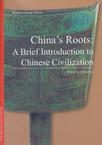我们的根
出版时间:2010-1 出版社:黎东方 上海人民出版社 (2010-01出版) 作者:黎东方 页数:247
Tag标签:无
前言
I assigned one chapter to geography, another to archaeology, and seven more to the ups and downs of politics, the cycles of unions and divisions of China's realms, the prosperity and decline of the central region as well as the upsurging and decadence of certain particular spots.I discussed the golden ages of China's philosophy, first during the Confucian times along with Lao Tze, Chuang Tze, Moh Tze, etc., and then during the times of Sung when Confucianism, after losing its ground to the Buddhists during the South and North Dynaties and the Tang, won it back during the Sung.And the same may be said about the flourishing of the historiography of the Sung.The hardest thing was to bring together the data of the technology and science with those of politics. It seems technology and science had a life of their own. So had arts and literature. I tried to describe these and used three chapters.
内容概要
I assigned one chapter to geography, another to archaeology, and seven more to the ups and downs of politics, the cycles of unions and divisions of China's realms, the prosperity and decline of the central region as well as the upsurging and decadence of certain particular
作者简介
Orient Lee(1907——1998), a well-known historian for his very popular series of particular introduction to Chinese history. He graduated from History Department of Tsinghua University. He ever became professor of many universities, such as Peking university, Tsinghua University, Zhongshan University. He was called "Chinese Toynbee".
书籍目录
PrefaceChapter 1 A Big and Beautiful CountryChapter 2 China During Stone AgesChapter 3 From Clans and Tribes to Tribal KingdomsChapter 4 Vassal States during Middle Chou and Independenl Kingdoms during Late ChouChapter 5 A Great Empire under China and HanChapter 6 Warlords, Minority Chiefs, and Co-Existence of the South and the NorthChapter 7 The Second Great Empire under Sui and T'angChapter 8 A Divided China during the Five Short Dynasties and the Two Sung DynastiesChapter 9 Yuan, Ming, and Ch'ing. The RepublicChapter 10 Attainments in Technology and ScienceChapter 11 Achievements in the ArtsChapter 12 Masterpieces in LiteratureAcknowledgements
章节摘录
插图:O-mei Shan (the Eyebrow Mountain), in Sze-chuen Province, has a Gold Roof Temple on its top, which is more than 3,000 meters above sealevel.Wu-tai Shan (the Five Layers Mountain), in Shan- si Province, was where two very famous bodhisattvas, Wen-chu and P'u-hsian, had held a discussion session.Huang Shan (the Yellow Mountain), in An-hwei Province, has a pretty Sea of Clouds around its waist.Among China's fifteen hundred rivers, the longest is the Long River. This Long River is known to the West as "Yang-tze River". Yang-tze is, in fact, the name of a small island inside this river between Shanghai and Nanking.The Long River is about 6,300 kilometers long. It originates in Ch'ing-hai and runs through six other povinces before it empties itself in the sea near Shanghai.Next in length to the Long River is the Yellow River which, like the Long River, also originates in Chinghai province. This Yellow River makes a loop in Suiyuan, absorbs the Fen in Shan-si and the Wi in Shensi, turns eastward to flow in northern Ho-nan, and loses its momentum on the flat land there, leaving behind a great deal of sands and silt. The sands and silt piled up and kept on raising the Yellow River's bed. People built dikes on both of its banks to protect their fields and houses, but the water often went over those dikes and flooded the fields and the houses. The Yellow River earned by doing such things a very bad nick-name: "China's Sorrow". It has been, on the other hand, also China's blessing. The challenge it offered had trained the Chinese into a hard working and thrifty people. The sands and silt it deposited have made the alluvial Flood Plain very fertile.
编辑推荐
《我们的根:简说五千年中国文明史(英文版)》:As the title suggests, the book describes how China and the Chinese people came to be what they are today through a chronological retelling of China's development from prehistoric to contemporary times.It presents a broad framework of the nation's transition through various periods of history. Above this frame, the author selectively adds more detailed descriptions of the most notable events, persons. and cultural aspects, offering insight into things that have come to define China and the Chinese people. There are twelve chapters, including about 50 thousand words and 100 pictures in the book.
图书封面
图书标签Tags
无
评论、评分、阅读与下载
用户评论 (总计0条)
相关图书
- 中国元素设计
- 趣趣英语
- Protel DXP实用教程
- 北大绿卡·课课大考卷(9年级上)
- 小学语文反思性教学
- 研究生教育理论与实践 (平装)
- 新时代大学英语教师用书1
- 中国软件业投融资报告
- 银行经营管理探索:金融银行MBA学位论文集 (平装)
- 李强
- 模具概论
- 全国音乐听力考级教程
- AutoCAD 2009中文版实例教程
- 三人行2013年最新版专升本入学考试专用教材-医学综合
- 工业自动化系统与集成 零件库 第102部分:符合GB/16656一致性规范的视图交换协议 (平装)
- 公共政策概论
- 云南农村沼气发展研究/云南全面建设小康社会研究丛书
- 机械工程力学
- 汉史不得不说的事儿
- 话语操纵术
- 科学拓展学习手册.3年级(上册)
- 大学生职业生涯规划教程
- 教材知识详解
- 语文报杯全国作文大赛历届获奖作品精选
- 民国审计思想史
